Table of Contents
Authentic Korean Beef and Broccoli Recipe
This 20-minute Korean beef and broccoli stir fry delivers restaurant-quality results with authentic gochujang sauce. Perfect for weeknight dinners, this recipe serves 4 with precise measurements you can trust.
Prep time: 15 minutes | Cook time: 5 minutes | Total time: 20 minutes
Servings: 4 | Difficulty: Easy | Calories: 385 per serving
Ingredients
- For the beef: 1.5 lbs (680g) sirloin steak, thinly sliced against the grain
- Marinade: 3 tbsp soy sauce, 2 tbsp brown sugar, 1 tbsp sesame oil, 3 garlic cloves (minced), 1 tbsp ginger (grated), 1 tsp black pepper
- For the sauce: 3 tbsp gochujang, 2 tbsp soy sauce, 1 tbsp rice vinegar, 1 tbsp honey, 1 tsp sesame oil, 2 tbsp water
- Vegetables: 3 cups broccoli florets, 1 red bell pepper (sliced), 2 green onions (chopped)
- Garnish: 1 tsp toasted sesame seeds
Step-by-Step Instructions
- Prepare the beef: Slice sirloin into 1/4-inch strips against the grain. Combine with marinade ingredients and let sit for 15 minutes.
- Make the sauce: Whisk together gochujang, soy sauce, rice vinegar, honey, sesame oil, and water.
- Stir-fry: Heat 1 tbsp oil in wok over high heat. Cook beef for 2-3 minutes until browned. Remove and set aside.
- Cook vegetables: Add 1 tbsp oil to wok. Stir-fry broccoli and bell pepper for 3-4 minutes until crisp-tender.
- Combine: Return beef to wok, add sauce, and toss everything together for 1-2 minutes until glossy.
- Serve: Garnish with green onions and sesame seeds. Best served immediately with steamed rice.
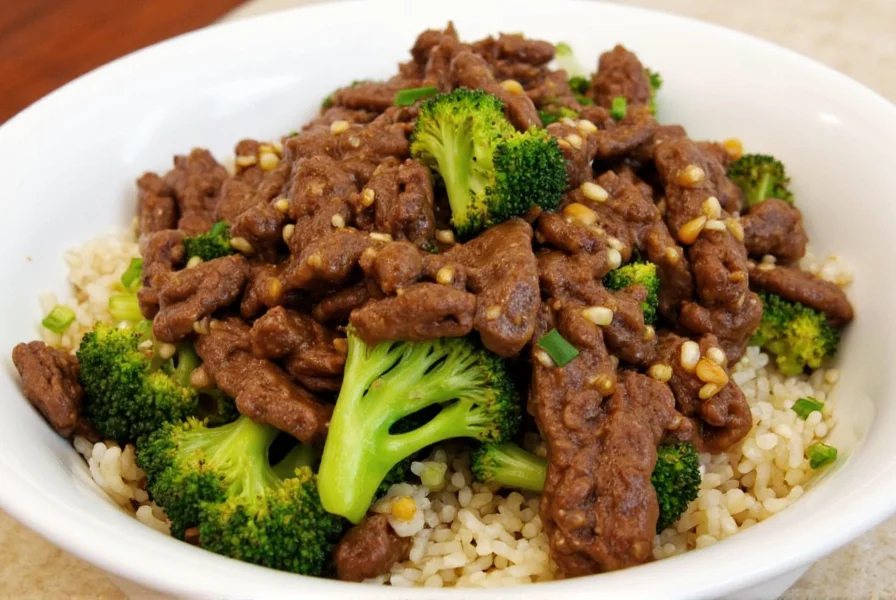
Spice Basics: What Makes Korean Cuisine Unique?
Korean cuisine stands apart through its masterful balance of five essential flavor elements. While Chinese-American beef and broccoli relies on a cornstarch-thickened brown sauce, authentic Korean versions feature complex fermented flavors from gochujang that create a sweet-spicy-umami profile unlike any other Asian cuisine.
Key Spices in Korean Cooking
- Gochujang: Fermented chili paste providing deep red color and complex sweet-spicy flavor (2-3 tbsp per serving)
- Gochugaru: Korean red pepper flakes adding texture and moderate heat (1-2 tsp per serving)
- Soy Sauce: Korean-style ganjang with lower salt content than Japanese or Chinese varieties (3 tbsp per serving)
- Sesame Oil: Toasted variety used sparingly for finishing (1 tsp per serving)
- Garlic and Ginger: Triple the amount used in Chinese cooking for stronger aromatic profile
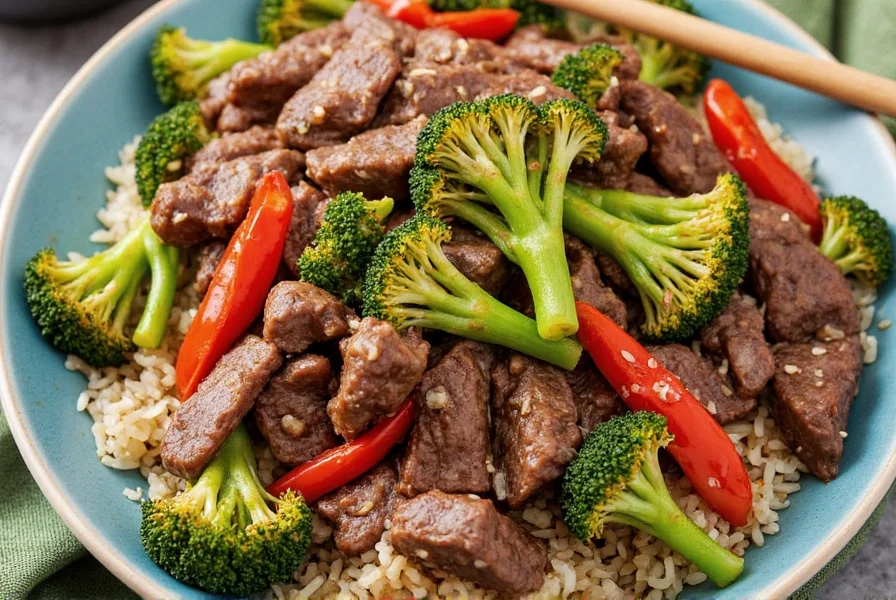
The magic happens when these elements combine in precise ratios. Authentic Korean beef and broccoli contains approximately 60% less sugar than Chinese-American versions while delivering deeper umami from the fermented gochujang.
Practical Tips for Perfect Korean Beef and Broccoli
Follow these professional techniques to elevate your dish from good to exceptional:
1. Beef Slicing Technique
Freeze the sirloin for 45 minutes before slicing. Use a sharp knife to cut 1/4-inch strips against the grain at a 45-degree angle. This creates more surface area for marinade absorption while ensuring tenderness.
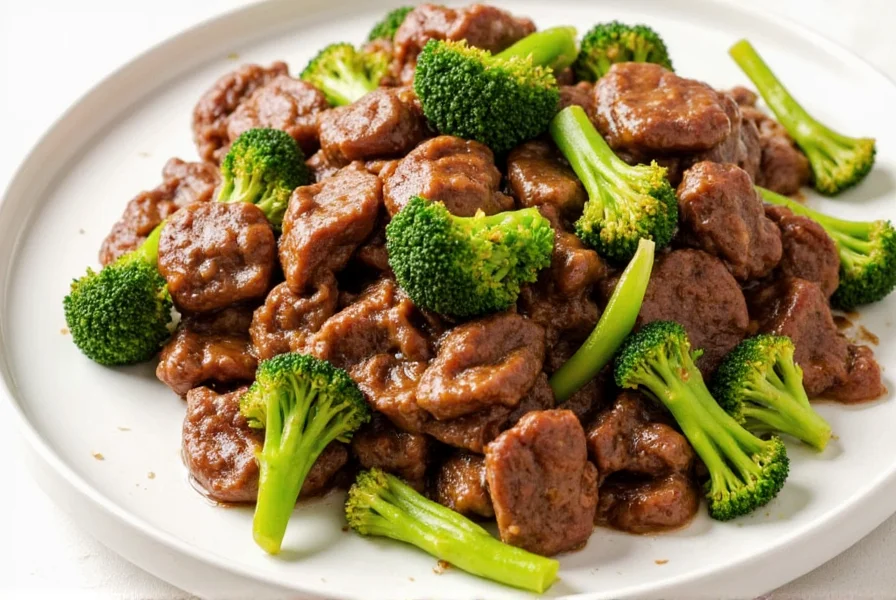
2. Temperature Control
Your wok must reach 400°F (204°C) before adding ingredients. Test by flicking water droplets - they should instantly vaporize. Cook beef in batches to prevent overcrowding, which lowers the temperature and causes steaming instead of searing.
3. Sauce Timing
Add the sauce during the last 90 seconds of cooking. Any longer and the gochujang's sugars will burn, creating bitter flavors. The sauce should coat ingredients glossy without pooling at the bottom.
4. Broccoli Blanching Method
For perfect crisp-tender broccoli, blanch florets in boiling salted water for 90 seconds, then immediately plunge into ice water. This preserves vibrant color while partially cooking before the final stir-fry.
Buying Guide: How to Choose the Best Ingredients
Ingredient quality directly impacts your final dish. Here's what to look for:
Beef Selection Guide
| Cut Type | Marbling Score | Best Cooking Method | Price Range (per lb) |
|---|---|---|---|
| Top Sirloin | 4-5/10 | Quick stir-fry (2-3 min) | $8.99-$11.99 |
| Ribeye | 7-8/10 | Sear then braise (4-5 min) | $12.99-$16.99 |
| Flank Steak | 3-4/10 | Thinly sliced stir-fry (90 sec) | $9.99-$12.99 |
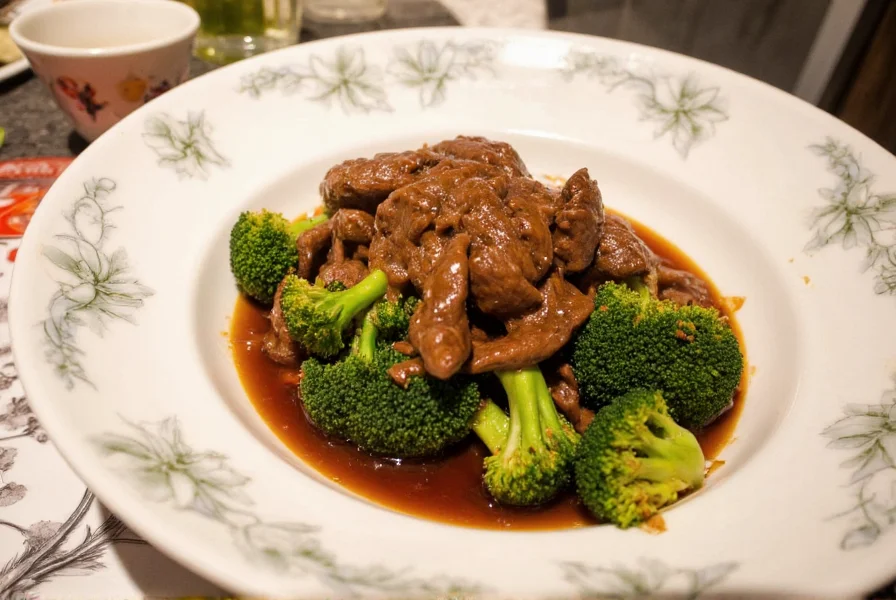
Gochujang Selection Guide
| Brand | Heat Level (1-10) | Sweetness | Best For |
|---|---|---|---|
| CJ Haechando | 5 | Medium | Beginners, balanced flavor |
| Sempio | 7 | Low | Authentic spicy version |
| Chung Jung One | 3 | High | Milder version, family meals |

Cooking Techniques: From Stir-Fry to Meal Prep
Master these methods for perfect results every time:
Restaurant-Style High-Heat Stir-Fry
Use carbon steel wok over maximum heat. Add oil only when wok smokes slightly. Cook beef in single layer - never stir for first 30 seconds to develop proper sear. Total cooking time should not exceed 5 minutes.
Meal Prep Friendly Version
Cook components separately: marinate and cook beef, blanch broccoli, make sauce. Store in separate containers. Combine and reheat in microwave for 90 seconds, then finish in hot pan for 60 seconds to restore wok hei (breath of the wok).
Common Mistakes to Avoid
Avoid these pitfalls that ruin authentic Korean beef and broccoli:
- Using pre-cut 'stir-fry beef': These often contain tenderizers that make meat mushy when cooked
- Substituting sriracha for gochujang: Creates one-dimensional heat without fermented complexity
- Adding cornstarch to sauce: Authentic versions rely on gochujang's natural thickness, not cornstarch
- Overcooking broccoli: Should retain crisp texture with slight resistance when bitten
- Using cold ingredients: Always bring meat and sauce to room temperature before cooking
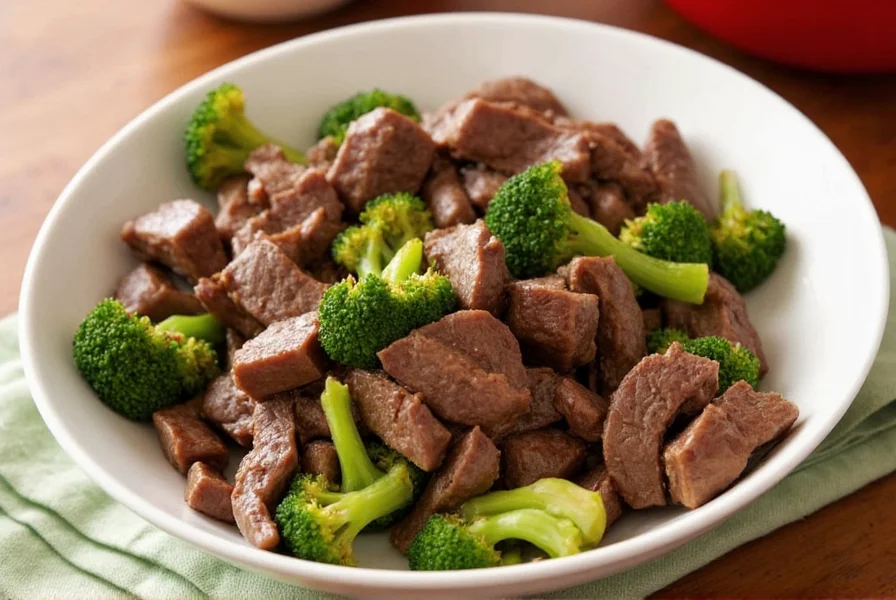
Conclusion
Authentic Korean beef and broccoli stands apart from its Chinese-American cousin through its sophisticated balance of fermented gochujang, precise ingredient ratios, and high-heat cooking techniques. By following this detailed recipe and understanding the underlying principles, you'll create a dish that captures the true essence of Korean home cooking - vibrant, complex, and deeply satisfying. The key lies in respecting the ingredient ratios and cooking methods that have been perfected over generations.
Frequently Asked Questions
What's the authentic difference between Korean beef and broccoli and Chinese-American versions?
Authentic Korean beef and broccoli uses gochujang as the sauce base, creating a complex fermented flavor profile with moderate heat (2-3/10) and balanced sweetness. Chinese-American versions typically use oyster sauce and cornstarch for thickening, resulting in a sweeter (often 40% more sugar), less complex sauce without the umami depth from fermentation. Korean versions also use three times more garlic and ginger for stronger aromatic notes.
How can I make authentic-tasting Korean beef and broccoli without a wok?
Use the hottest burner on your stove with a cast iron skillet preheated for 5 minutes. Heat oil until shimmering but not smoking. Cook beef in single layer without stirring for 30 seconds to develop proper sear. For the authentic 'wok hei' flavor, add 1 tsp of toasted sesame oil during the final 30 seconds of cooking. An air fryer can also work for the beef component - sear at 400°F for 8 minutes with frequent shaking.
What's the secret to preventing tough beef in Korean stir-fries?
The three key factors are: 1) Slicing against the grain at 45 degrees into 1/4-inch strips, 2) Marinating with 1 tbsp of grated Asian pear (or kiwi) which naturally tenderizes without mushiness, and 3) Cooking at proper high heat (400°F) for exactly 90-120 seconds. Never cook beyond medium-rare as the residual heat will continue cooking the beef after removal from the pan.
How can I adjust this recipe for authentic Korean restaurant-style heat?
For authentic restaurant heat level (6/10), increase gochujang to 4 tbsp and add 1 tbsp gochugaru (Korean red pepper flakes). The professional technique is to bloom the gochugaru in 1 tsp of hot sesame oil for 30 seconds before adding to the sauce. Avoid using Western chili flakes as they lack the smoky sweetness of authentic gochugaru. True Korean heat builds gradually rather than hitting immediately like Western spice.
What's the proper rice pairing for authentic Korean beef and broccoli?
Authentic pairing uses short-grain white rice cooked with 10% sweet rice (mochi rice) for ideal stickiness. The rice-to-beef ratio should be 2:1 by volume. For modern health-conscious versions, brown sushi rice works well but requires 20% more water during cooking. Never use long-grain rice as it lacks the necessary starch structure to properly mix with the sauce. The rice should be slightly warm when served to help balance the dish's moderate heat.
How do Korean home cooks typically repurpose leftovers of this dish?
Koreans commonly transform leftovers into 'dubu-bokkeum' by adding firm tofu and gochujang to create a spicier stir-fry, or 'gogi-bap' by mixing with warm rice, raw egg, and sesame oil for a deconstructed bibimbap. The most authentic method is to add broth and kimchi to create a quick 'soegogi-jjigae' (beef stew) the next day. Never simply reheat leftovers - always add one new ingredient to refresh the flavor profile.










 浙公网安备
33010002000092号
浙公网安备
33010002000092号 浙B2-20120091-4
浙B2-20120091-4